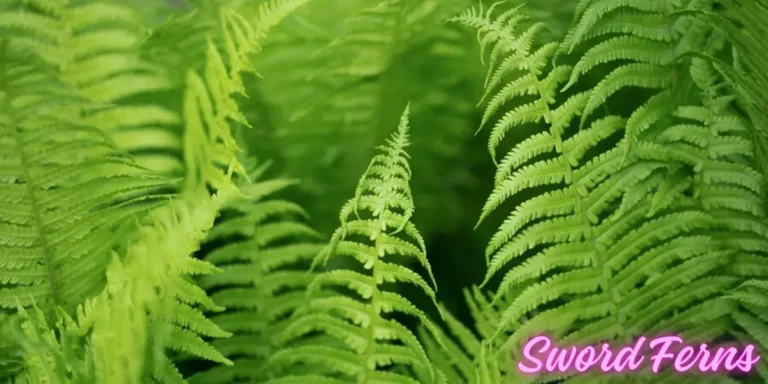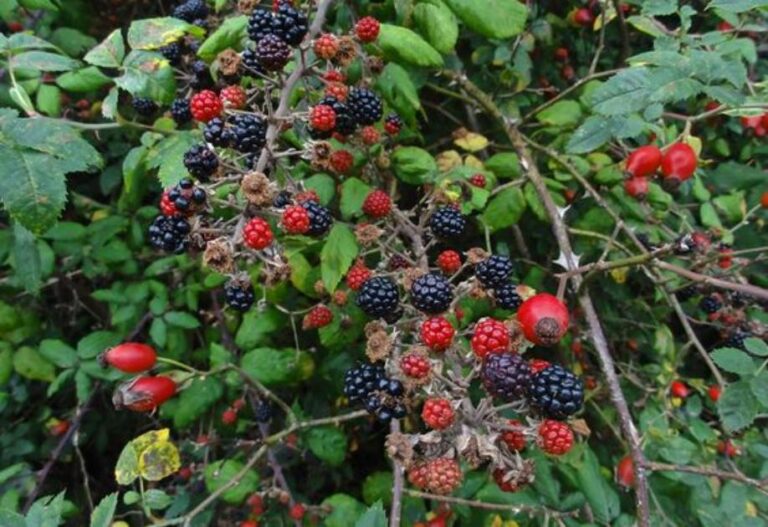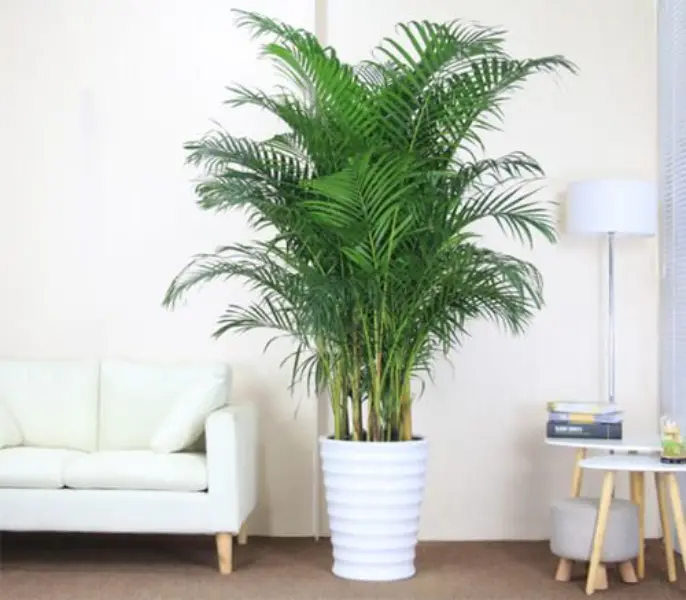Trees with Purple Flowers: 8 Types And Growing Conditions
Trees with purple flowers are like nature’s own colorful artwork, bringing a burst of charm to any garden or park. These trees stand tall and proud, showing off their stunning blooms in shades of purple.
From the famous Jacaranda to the delightful Lavender Twist Redbud, each tree adds its own special touch to the landscape. In this guide, we’ll explore some of these beautiful trees, sharing tips on how to grow them and highlighting their beauty.
So, whether you’re a green-thumb enthusiast or simply love admiring nature’s beauty, let’s dive into the world of trees with purple flowers!
8 Best Types Of Trees with Purple Flowers
1. Jacaranda

Known for its stunning purple blossoms in late spring, Jacaranda trees are native to South America. They have fern-like foliage and can grow up to 50 feet tall.
2 Royal Empress:

Also called the Paulownia tree, it features large, heart-shaped leaves and clusters of lavender flowers in early spring. It grows rapidly and is often prized for its timber.
3. Eastern Redbud

Native to North America, the Eastern Redbud produces small, rosy-purple flowers that bloom along its branches in early spring before its leaves emerge. It typically grows up to 30 feet tall.
4. Crape Myrtle

These trees are known for their vibrant purple, pink, or white flowers that bloom in summer. They are commonly found in landscapes across the southern United States and can reach heights of 15 to 25 feet.
5. Chinese Fringe Tree

While primarily known for its white flowers, some cultivars of the Chinese Fringe Tree produce purple blooms. It’s a small, deciduous tree native to China and Korea, reaching heights of 12 to 20 feet.
6. Magnolia ‘Jane’

A hybrid magnolia, ‘Jane’ produces fragrant, purple-pink flowers in spring. It’s a compact tree, perfect for smaller gardens, and reaches heights of 10 to 15 feet.
7. Chaste Tree:

Also known as Vitex, this tree produces spikes of lavender-purple flowers in summer. It’s drought-tolerant and attracts pollinators like bees and butterflies. It typically grows up to 10 to 20 feet tall.Texas Mountain Laurel
8. Texas Mountain Laurel

Native to the southwestern United States, this tree blooms with clusters of fragrant, purple flowers in spring. It’s evergreen and can grow up to 15 feet tall, making it a popular choice for xeriscaping.
Botanical Features of Trees with Purple Flowers
Understanding the botanical features of trees with purple flowers is crucial for both enthusiasts and horticulturists. Let’s explore the key characteristics that define these captivating specimens:
Flower Structure:
- Purple flowering trees exhibit a variety of flower structures. Some, like the Jacaranda, display clustered blooms, while others, such as the Eastern Redbud, feature flowers directly on the branches. Examining the intricate details of these blooms provides insight into each tree’s unique identity.
Leaf Morphology:
- The leaves of purple flowering trees come in diverse shapes and sizes. Royal Empress Trees, for instance, boast large heart-shaped leaves, enhancing the visual appeal of the tree even when not in bloom. Understanding leaf morphology aids in proper identification and care.
Deciduous vs. Evergreen:
- Purple flowering trees can be deciduous or evergreen, impacting their appearance throughout the year. Some, like the Crepe Myrtle, shed their leaves in the fall, revealing an attractive bark structure, while others, such as certain Magnolia varieties, retain their leaves year-round.
Size and Growth Habit:
- Consider the ultimate size and growth habit of the tree before planting. While the Magnolia ‘Jane’ is a compact option suitable for smaller spaces, the Royal Empress Tree is known for its rapid growth, making it ideal for quick landscape transformations.
Preferred Climate:
- Different purple flowering trees thrive in various climates. Research the native regions of each species to ensure they are well-suited to your local climate. Understanding their preferred conditions contributes to successful cultivation.
As you explore these botanical features, you’ll gain a deeper appreciation for the diversity within the realm of trees with purple flowers. This knowledge will not only aid in identification but also guide your efforts in creating a thriving and visually appealing landscape.
Seasonal Bloom and Lifecycle
Spring Spectacle:
- Trees with purple flowers typically grace us with their spectacular bloom during the spring season. This burst of color marks the end of winter dormancy, creating a visually striking transition in the landscape. Eastern Redbuds, for example, adorn themselves with pinkish-purple blossoms, signaling the arrival of warmer days.
Duration of Bloom:
- The duration of the flowering period varies among different species. While some trees, like the Crepe Myrtle, showcase blooms for an extended period throughout the summer, others, such as the Jacaranda, have a more concentrated blooming period in late spring to early summer. Understanding this timing enhances your appreciation for the seasonal cycles.
Lifecycle Phases:
- Beyond the bloom, trees with purple flowers go through distinct lifecycle phases. From the emergence of buds to the development of leaves and, eventually, the maturation of seeds or fruits, each phase contributes to the overall health and vitality of the tree. Observing these stages provides insight into the natural rhythm of these botanical wonders.
Fall Foliage Changes:
- In the case of deciduous purple flowering trees, the fall season brings about a secondary spectacle. As the leaves change color and eventually fall, the tree undergoes yet another transformation. This cycle of renewal adds a dynamic element to the landscape, making these trees a joy to experience throughout the year.
Understanding the seasonal bloom and lifecycle of trees with purple flowers allows you to anticipate and celebrate their natural beauty at different times of the year. Whether you’re planning a garden or simply appreciating nature’s cycles, this knowledge enhances your connection with these stunning specimens.
Environmental Preferences and Growing Conditions
Sunlight Requirements:
- Trees with purple flowers have specific sunlight preferences. Most varieties thrive in full sunlight, receiving at least six hours of direct sunlight daily. Ensure that you plant these trees in locations where they can bask in the sun, promoting optimal growth and prolific flowering.
Soil Type and pH Levels:
- Understanding the soil requirements is essential for successful cultivation. Purple flowering trees generally prefer well-draining soil. Conduct a soil test to determine the pH levels, as some species may have specific preferences. Amending the soil accordingly ensures a conducive environment for root development.
Watering Needs:
- While these trees are often resilient, proper watering is crucial, especially during the establishment phase. Once established, they typically have moderate water requirements. Avoid overwatering to prevent root rot, and adjust the watering schedule based on weather conditions and soil moisture.
Climate Adaptability:
- Consider the climate of your region when selecting and planting these trees. Some species, like the Royal Empress Tree, are hardy and can withstand a range of conditions. Others, such as the Jacaranda, thrive in subtropical climates. Adapting to your local climate ensures the long-term health of the tree.
Companion Planting:
- Enhance the overall health of your purple flowering trees by considering companion plants. Choosing compatible plants that share similar environmental preferences can create a harmonious and visually appealing landscape. This approach also supports biodiversity and ecological balance.
Understanding the environmental preferences and growing conditions of trees with purple flowers is essential for fostering a thriving and vibrant garden. By providing the right conditions, you can ensure that these trees reach their full potential, gracing your outdoor space with their captivating beauty.
Landscaping with Purple Flowering Trees
Focal Points in the Garden
- Incorporating trees with purple flowers into your landscaping design can create stunning focal points. Placing them strategically in the garden draws attention and adds a touch of elegance. Consider their size, shape, and bloom time when planning their placement.
Color Harmony
- Purple flowering trees can be used to create a harmonious color palette in your landscape. Pair them with complementary colors such as whites, pinks, or blues to enhance visual appeal. This careful selection adds balance and creates a captivating display throughout the seasons.
Variety in Heights and Shapes
- Explore the diverse heights and shapes of purple flowering trees to add depth to your garden. Mix taller trees like Jacarandas with smaller varieties such as Eastern Redbuds to create a layered effect. This variety adds interest and contributes to an aesthetically pleasing landscape.
Seasonal Interest
- Choose trees that offer seasonal interest beyond their flowering period. Some species, like the Royal Empress Tree, feature large heart-shaped leaves, contributing to the visual appeal even when not in bloom. This ensures that your landscape remains captivating year-round.
Create Shaded Retreats
- Trees with purple flowers can serve a functional purpose by providing shaded retreats in your garden. Plant them strategically to create cool, shaded areas where you can relax and enjoy the beauty of your outdoor space. This dual-purpose approach adds both visual and practical value.
Challenges and Maintenance Tips
Pest and Disease Management
- While trees with purple flowers are generally hardy, they may face challenges such as pests or diseases. Regular inspection is crucial to identify any issues early on. Common problems include aphids or fungal infections, which can often be addressed through natural or chemical means.
Pruning Techniques
- Proper pruning is essential for maintaining the health and shape of purple flowering trees. Trim away dead or diseased branches, and shape the tree to encourage a balanced structure. Pruning is best done during the dormant season to minimize stress on the tree.
Watering Practices
- Overwatering can lead to root rot, while underwatering can stress the tree. Understanding the specific water needs of your chosen species is crucial. Consider factors such as soil type, climate, and the tree’s stage of growth when establishing a watering routine.
Fertilization Guidelines
- Purple flowering trees benefit from regular fertilization to ensure optimal growth and blooming. Use a balanced, slow-release fertilizer in the spring, taking care not to over-fertilize, as this can lead to excessive foliage growth at the expense of flowers.
Seasonal Care
- Tailor your maintenance efforts based on the seasons. In spring, focus on promoting blooming and healthy growth. Summer care involves monitoring water levels and addressing any pest issues. Fall is the time for preparing the tree for winter dormancy through pruning and fertilization.
By being proactive in addressing potential challenges and adopting proper maintenance practices, you can ensure the longevity and vibrancy of your purple flowering trees. Regular care not only enhances their visual appeal but also contributes to their overall health and resilience.
FAQs
What is the name of a tree with purple flowers?
The name of a tree with purple flowers is Jacaranda.
What is the Chinese tree with purple flowers?
The Chinese tree with purple flowers is the Chinese Fringe Tree.
What is the Japanese purple blossom tree?
The Japanese purple blossom tree is called the Japanese Flowering Cherry or Prunus serrulata.
What kind of tree has purple trumpet flowers?
The tree that has purple trumpet flowers is known as the Jacaranda tree.
What is the Chinese tree of luck?
The Chinese tree of luck is commonly referred to as the Chinese Money Plant or Pilea Peperomioides.
Also read
Calathea Varieties
Jade Plant Benefits
Plants That Repel Fleas
Top 10 Part Shade Flowers And Care Tips






